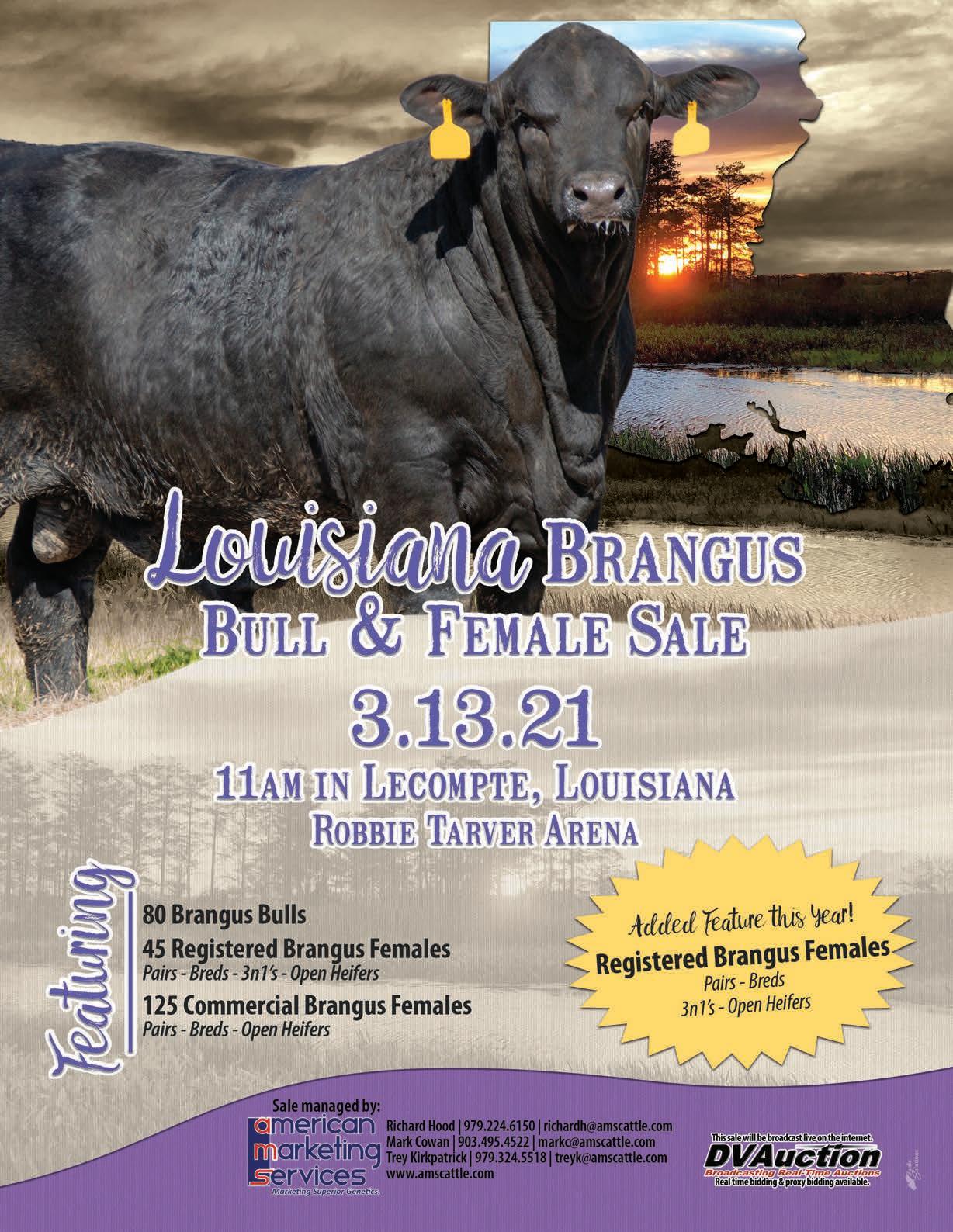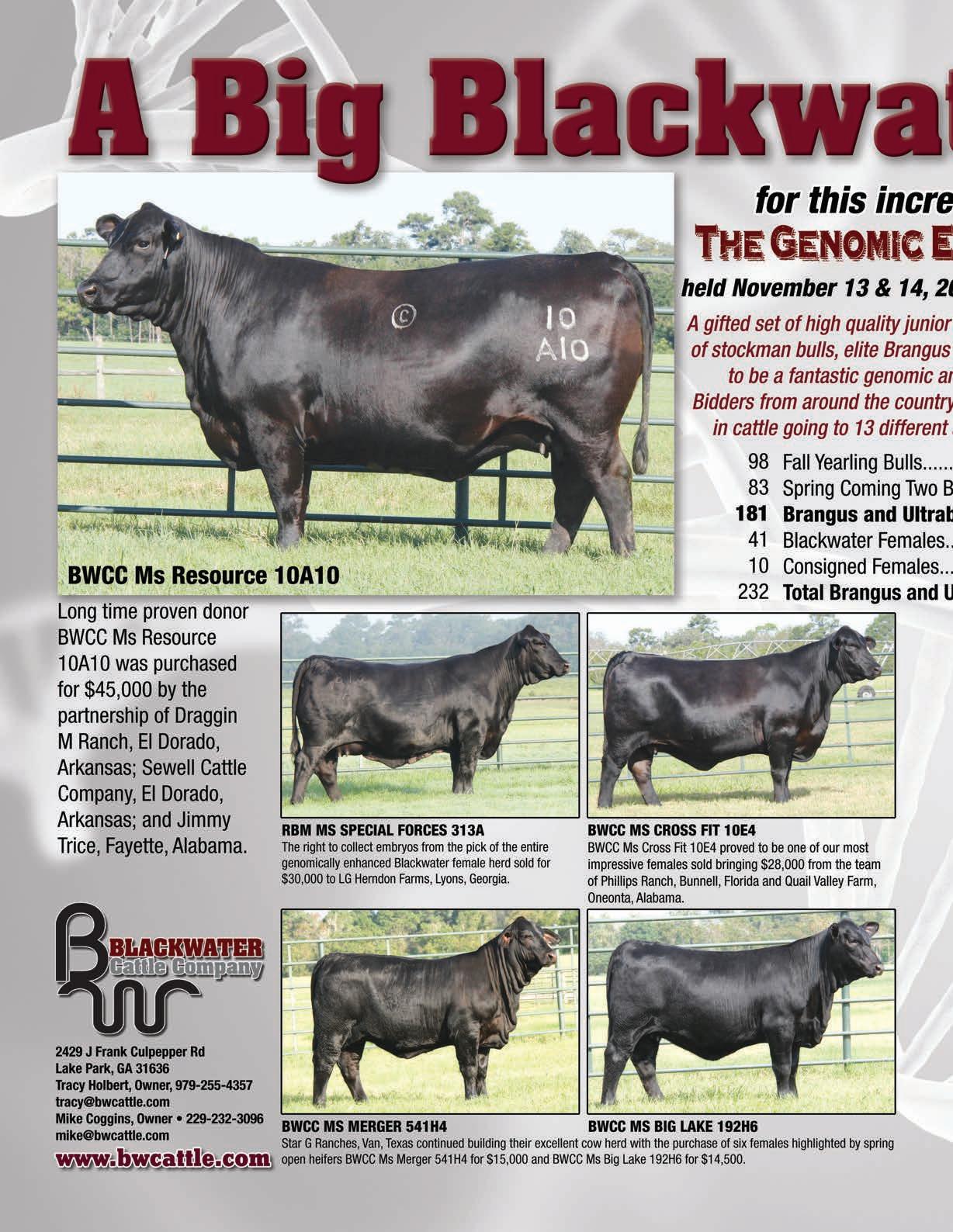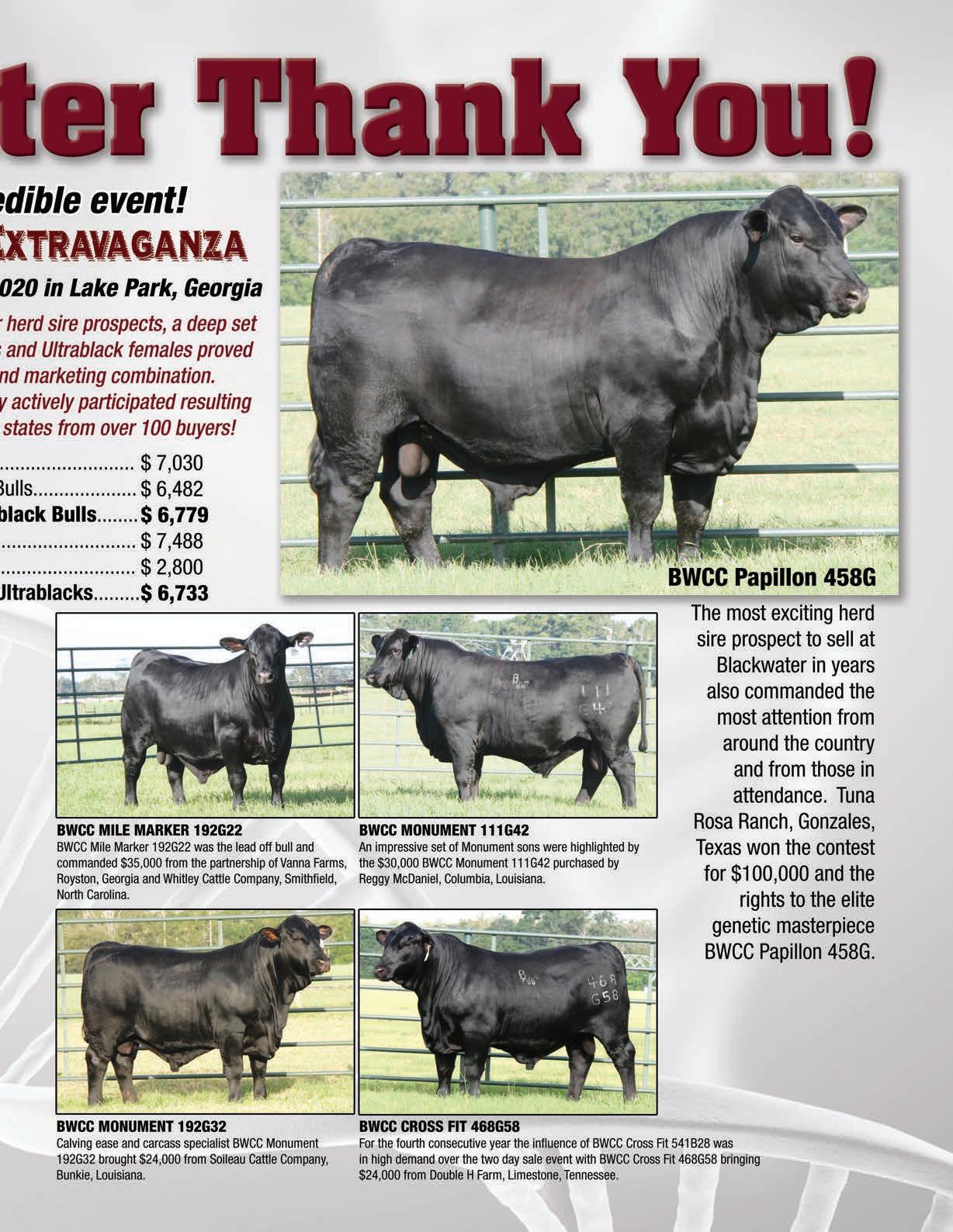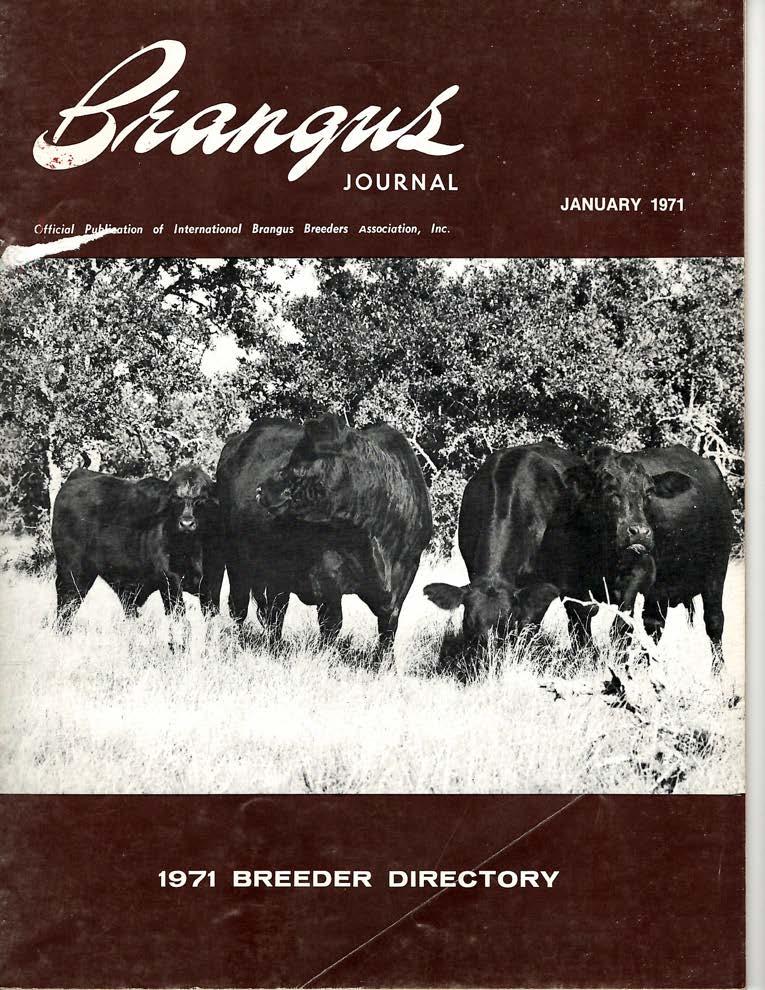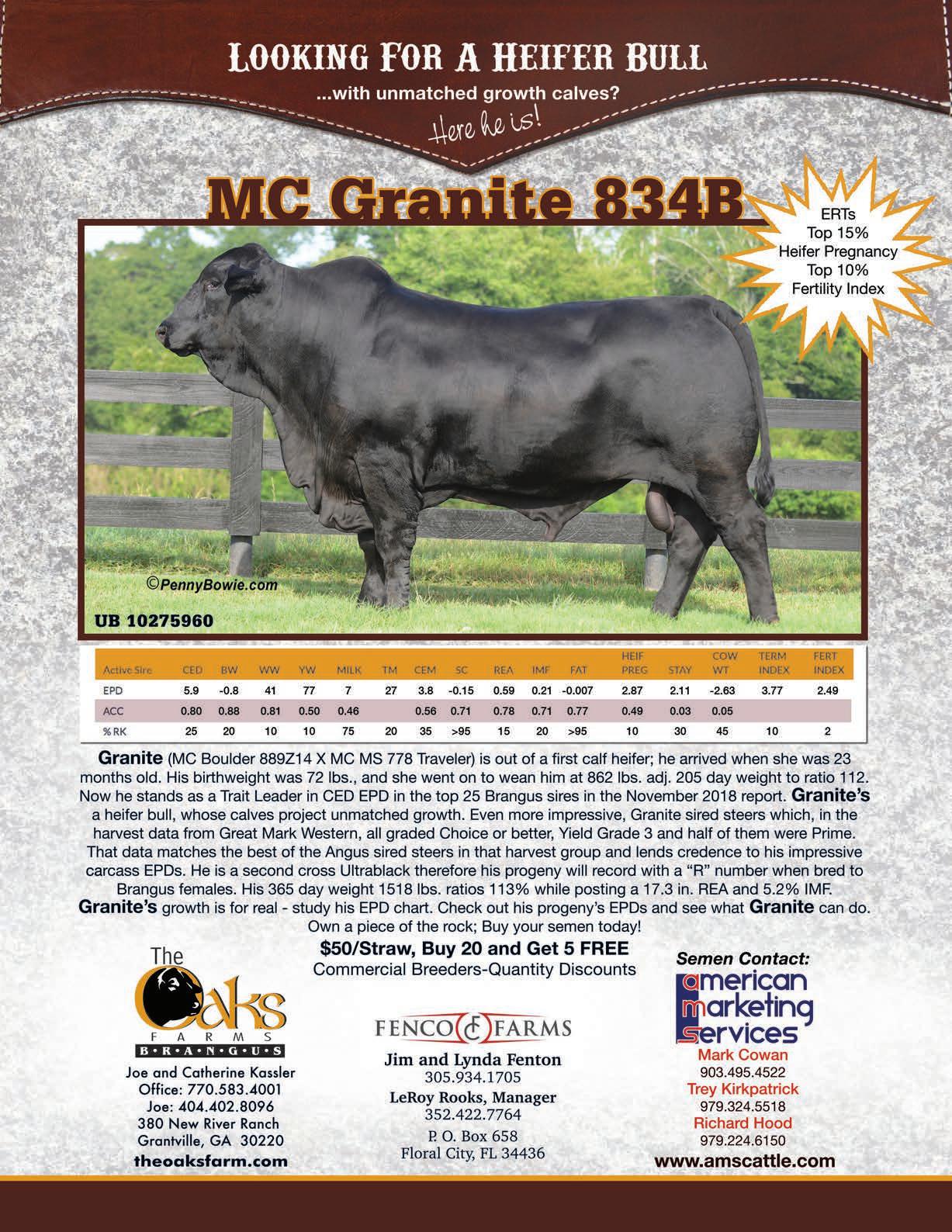
26 minute read
SALE SUMMARIES
SALESummaries
CAVENDER DRAGGIN’ M AND PARTNERS AT CAVENDER’S NECHES RIVER RANCH COMMERCIAL FEMALES NOVEMBER 20, 2020 | JACKSONVILLE, TEXAS Lots Gross Average
26 Bred Brangus Cows $57,950 $2,228.85 86 Bred Black F1 Heifers $160,600 $1,867.44 261 Bred Brangus Heifers $484,075 $1,854.69 44 Bred Brangus Baldy Heifers $82,925 $1,884.66 391 Total Bred Heifers $727,600 $1,860.87 56 Open Brangus Heifers $92,900 $1,658.93 25 Angus x Brahman Pairs $68,800 $2,752.00 19 Brangus Pairs $44,350 $2,334.21 5 Brangus Baldy Pairs $10,750 $2,150.00 22 Tiger Stripe Pairs $53,150 $2,415.91 71 Total Pairs $177,050 $2,493.66 544 Total Commercial Females $1,055,500 $1,940.26
The 16th Annual Fall Production Sale at Cavender’s Neches River Ranch started off with the highly anticipated commercial female sale. A large crowd was on hand as the sale led-off with strong demand on the pairs and elite first calf F1 Brangus pairs carrying calves at side by Cavender Ultrablack bulls. Boggy Springs fetched a large group of pairs for $2,800, while another volume buyer, Broken C Ranch, bought several groups at $2,750. The demand continued as Tom Cann and repeat customer, Garrett Brangus, both bought a truckload of Cavender bred Brangus for $1,872 and $1,900, respectively. The day’s volume buyer, and long-term customer, Threlkeld Farms, got into the action buying most of the open Brangus heifers from Draggin’ M and Cavender Brangus for a $1,650 average then finished up buying most of the Sewell Brangus bred females and black F1 Brangus bred from J&S Cattle to earn recognition as the volume buyer. The sale finished solid and was a testament of the demand on top quality CDP ranch-raised reputation Brangus genetics!
CAVENDER DRAGGIN’ M AND PARTNERS AT CAVENDER’S NECHES RIVER RANCH REGISTERED FEMALES NOVEMBER 20, 2020 | JACKSONVILLE, TEXAS Lots Gross Average
10 Brangus 3-N-1’s $101,000 $10,100.00 9 Brangus Bred Heifers $86,750 $9,638.89 2 Brangus Donors $35,000 $17,500.00 43 Brangus Open Heifers $323,250 $7,517.44 3 Brangus Pairs $12,000 $4,000.00 67 Total Registered Females $558,000 $8,328.36
It was a beautiful fall weekend for the 16th Annual Fall Production Sale at Cavender’s Neches River Ranch. Sale goers were treated to first class hospitality, hosted by Joe and Nancy Cavender, at the newly-expanded and renovated Neches River sale and event facility. The event kicked off in front of a packed house and enthusiastic buying crowd with an incomparable offering of proven donors, future breed leaders, and open heifers. The inaugural registered female event proved to be a breed highlight event of the year with outstanding turnout and elite females from start to finish averaging $8,328. Of the 67 lots, 20 head commanded $8,000 or more.
Feature lots of open heifers included lot 7, DMR Business Line 60H4 out of the great MS Basin Lucy 0060 donor dam. With one of the most impressive spreads from birth to yearling in the entire offering, the tremendous female commanded $38,000 going to Peanut Carr of Columbia, Louisiana. Other open heifer features of note included lot 23 MS DMR Cash Flow 166H purchased by Phillips Ranch and Herndon Farms and lot 55 Wat Empire 541G2 of Johnston Farms, which sold to Jimmy Trice, TTT Farms for an impressive $25,000.
Dam of the now deceased $80,000 DMR Crossroads 7957, MS DMR Coronado 795C5, was sold as a proven donor dam for $25,000 to Elias Brangus and is sure to add impressive progeny to their program. Other features topping the offering included MS DMR Empire 392G18, boasting seven traits in the top 35% of the breed, sold as a bred heifer to Milton Villarreal for $20,000 and the open heifer cataloged as lot 22, MS DMR Monument 166G11, with six traits in the top 15% of the breed featuring great outcross genetics sold to Jimmy Trice, TTT Farms. CDP would like to recognize Lynn Gravley of Frisco, Texas as the high-volume buyer at the registered female sale purchasing 11 lots.
CAVENDER DRAGGIN’ M AND PARTNERS AT CAVENDER’S NECHES RIVER RANCH BULLS NOVEMBER 20, 2020 | JACKSONVILLE, TEXAS Lots Gross Average
120 Coming 2 Year Old $852,500 $7,104.17 Brangus Bulls 21 Coming 2 Year Old $91,250 $4,345.24 Charolais Bulls 101 Yearling Bulls $594,500 $5,886.14 242 Total Bulls $1,538,250 $6,356.40
Cattlemen from 15 states gathered for day two of the 16th Annual Fall Production Sale at Cavender’s Neches River Ranch for the incredible bull selection. On top of the (continued on page 20)
(continued from page 18) expanded offering, there was excitement towards the new pens that were built to better merchandise the larger offering of bulls at CDP. The shopper-friendly pens were filled with uniformity, as there were large sire groups, many brothers and half-brothers. An enthusiastic, record-setting crowd filled the recently renovated sales facility. The sale began with a packed house and buyers competed from end to end, leading to one of, if not the, top bull sales in the country and a breed leading event. When the dust settled, premium Brangus and Ultrablack genetics, that are sure to help drive success for many operations, were spread across 15 states, coast-to-coast.
Topping the list of high-sellers was a standout Empire son cataloged as lot 104, DMR Empire 415G35, an impressive calving-ease, maternal bull from top to bottom. With proven, successful genetics on his dam’s side as well, he’s sure to leave his legacy in the Brangus breed. He sold to Las Palomas Ranch (2/3) and Gold Creek Brangus (1/3) for $56,000. Other standout calving-ease Empire sons sold included lot 228, DMR Empire 535G45, purchased by Salacoa Valley Farms for $48,000 and lot 225, DMR Empire 30G36, sold to Jeff Thomas. As a maternal brother to the now deceased $80,000 Crossroads bull, lot 230, DMR Capitalist 795G26, has a striking phenotype coupled with impressive carcass quality. This Capitalist son was an easy choice for buyers on sale day and ultimately sold to Quail Valley for $20,000.
Lot 236, WAT Empire 302G44 sold to Hayman 711 who also purchased lot 115, DMR Three D 30G87 for $17,000 and lot 229, CB Trail Boss 607G7, one of the heaviest muscled bulls in the offering with an impressive seven traits in the top 10% of the breed, purchased for $14,500. Other bulls of note included lot 232, CB Capital Gain 2051G11 sold to Draggin’ M Ranch for $16,000 and lot 111, CB Capital Gain 60G23 sold to Jimmy Trice, TTT Farms for $14,500.
CDP Brangus is grateful to all our friends and customers who came out to support, making this sale a great success. Mark your calendars for Friday, March 12, 2021 to once again join us for an outstanding offering of bulls at Cavender’s Neches River Ranch. For more information regarding the CDP program including semen sales and catalog requests, please visit CDPBrangus.com.
SALACOA VALLEY FARMS SALES NOVEMBER 20-21, 2020 | FAIRMOUNT, GEORGIA Lots Gross Average
54 Fall Pairs/Bred Cows $239,250 $4,431 45 Spring Bred and 3-N-1 Cows $175,550 $3,906 1 Semen Lot $8,125 $8,125 100 Cow Sale Lots $423,125 $4,231 93 coming two-year-old Brangus, $455,600 $4,899 Ultrablack, Santa Gertrudis, and Super American Bulls 65 Yearling Brangus, Ultrablack, $394,750 $6,073 Santa Gertrudis, and Super American Bulls 158 Total Bulls $850,350 $5,382
Ideal fall weather and days of sunshine greeted a crowd of buyers and onlookers alike at the recent Salacoa Valley Production sale. One-hundred and fourteen buyers from 11 states appreciated the high-quality offering throughout the two-day event as reflected in the rapid fire and competitive bidding in both the female and bull sales.
In Friday evening’s female sale, Quail Valley Farm, Oneonta, Alabama purchased the top seller when they paid $26,000 to own lot 21, MS Salacoa Stonewall 209B6. This powerful donor records three @114 WR and averages 10 embryos per flush.
The second-high selling female was lot 44, TBF Miss Jethro 803B and her outstanding heifer at side lot 44A, MS Salacoa Big Town 803H16. Cuevas T3 Brangus, Purvis, Mississippi and Vanna Farms, Royston, Georgia teamed up to pay $11,000 for the dam. Quail Valley Farms and Harris Riverbend Farms teamed up to pay $10,000 for the Big Town heifer at side.
At $10,750, the third high seller was lot 24, MS Salacoa Stonewall 289A3 and lot 24A, MS Salacoa Big Town 289H3. Stover Ranch, Dallas, Georgia paid $7,500 for the outstanding heifer calf at side and TCC Farms, Adairsville, Georgia paid $3,250 to own the super productive 289A3 cow. Tanner Farms, Shuqualak, Mississippi paid $10,500 to own the evenings next high selling female, lot 52, MS Salacoa Patton 23A75. This powerful donor boasted big EPDs and a good Big Town heifer calf at side.
Also selling for $10,500 was lot 85, MS Salacoa Atlanta 535B25. Stover Ranch won the bid on this donor who is one of the first Atlanta daughters in production. She has a good Broadway bull calf at side.
The Saturday morning bull sale started with a bang when Quail Valley Farms paid $90,000 to own full possession and one-half semen interest in lot 151, Perfect Fit of Salacoa 468G57. This powerful son of Cross Fit is out of the great 468P22 donor.
Herndon Farms, Lyons, Georgia purchased the days second high seller when they paid $35,000 to own lot 266, Salacoa Cross Fit 468G55. He is a full brother to the high selling bull, Perfect Fit.
Herndon Farms also purchased the third high seller when they bought lot 311, Salacoa Never Surrender 209G56. This big carcass and big growth herd sire prospect is out of a Sitz Top Product donor, 209C5.
Briggs Ranch, Victoria, Texas paid $9,000 for lot 274, GHB Never Surrender 392G1. This light birth, moderate, and wide bodied Never Surrender son boasts 10 EPD traits ranking in the breed’s top 30% or greater. He was consigned by Gulf Haven Brangus, Purvis, Mississippi.
Anthony Unruh, Magee, Mississippi paid $9,000 to purchase one-half semen interest and full possession of lot 152, T3 Playmaker 30G7. This powerful Hollywood son is out of the 30D donor and was consigned by Cuevas T3 Brangus.
RAISING THE BRANGUS OFTomorrow
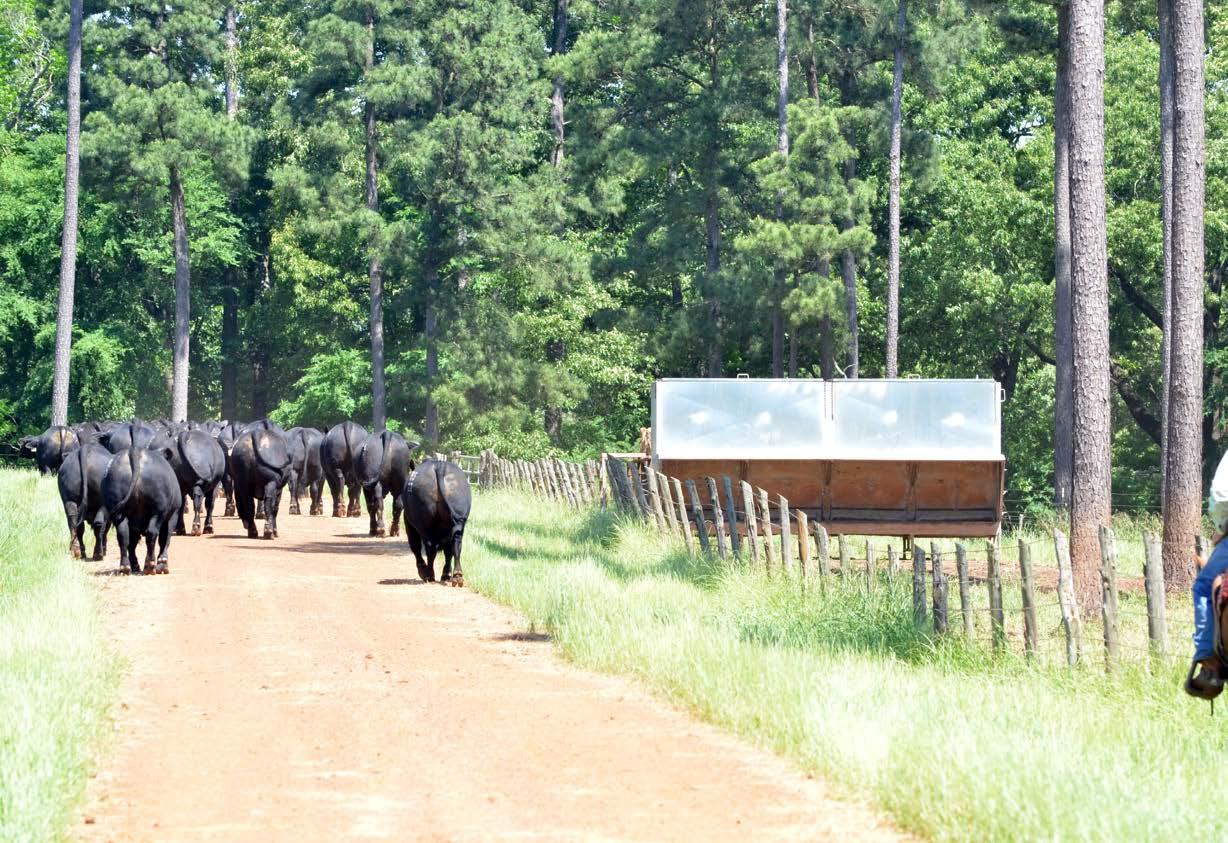
The 2020 IBBA Top Embryo Transfer Breeder, Draggin’ M Ranch focuses on and encourages others towards progressive breeding. by Emily Lochner
“The best way to predict your future is to create it,” was once advised by Abraham Lincoln. Draggin’ M Ranch (DMR), owned by John Milam and managed by Grady Green, leave no decisions to chance about their future in the Brangus business. Recently published as the 2020 IBBA Top Embryo Transfer (ET) Breeder, the crew at Draggin’ M utilizes a common, but not widely utilized, cattle industry technology to breed success.
| THE BACKGROUND |
Born in El Dorado, Arkansas and raised primarily in Montana, Milam has been around the cattle industry his entire life. Growing up, he worked as a cowboy wrangling horses and working cows and spent many summers at his uncle’s ranch backgrounding steers in the Texas panhandle. He attended Colorado State University with the intent to become a veterinarian, but pivoted plans, graduating with a degree in civil engineering. Years later he moved back to Arkansas and began purchasing land and building a construction company. “John is truly a self-made man,” says Green. “He got his start in the construction business by investing in a couple pieces of equipment at a young age and doing dirt work himself. Over time, his business grew. He continued to make equipment purchases and hire onto his team. Today, he’s got hundreds of employees and manages a general contracting and construction company.” Milam began the Draggin’ M operation in the late 1990s as a commercial herd of crossbred cattle. At the time, he was traveling to Camp Cooley to purchase registered bulls and it wasn’t soon after that Milam began purchasing registered Brangus females to begin his new cow base. Of course, ranch manager Grady Green is no stranger to the cattle business, either. The son of longtime Brangus operator, Craig Green, raising Brangus cows is in his blood. Grady was born in Eureka, Kansas, where Craig was working for Brinks Brangus. Throughout his school years, they moved to Brenham, Texas, to become part of the Windy Acres program and later to Rose Bud, Arkansas, working for Caldwell Farms. Eventually the Greens landed at the iconic Camp Cooley Ranch operation in Franklin, Texas. While in high school, Grady would take care of the bull test herd at Camp Cooley and got his start in embryo transfer with the donor cow logistics on site. He attended Tarleton State University and later graduated top of his class in 2009 from the prestigious Texas Christian University (TCU) Ranch Management Program.
“I began working for John right out of college,” recalls Green. “I graduated on a Saturday afternoon, packed my bags, moved to Arkansas, and started work at Draggin’ M Ranch on Monday morning.”
| THE REGISTERED REVITALIZATION |
Milam had begun to purchase registered females from Camp Cooley in 2005. But originally, the plan was just to buy cows to build numbers. When Green came aboard DMR, they realized they weren’t going to get ahead in the business by simply buying cows.
“We needed special cows, namely donor cow quality, to take the best genetics and begin to replicate as fast as we could,” says Green. “John always had the commercial herd alongside the registered herd, so it was a natural fit to use our commercial cows as recips in an ET flush situation.”
“The majority of the cows we have been successful with trace back to the original Brinks herd. But we’ve not been picky about where the good cows come from. We have standout females from Camp Cooley, Blackwater, Mound Creek, Schmidt Farms, Salacoa Valley, Cavenders, Suhns, and many others. Our philosophy is, if there’s a cow that is selling in the top 5-10% of the breed, we go after her and hope we can afford her,” Green states.
The DMR crew seeks out a balanced approach: a healthy blend between genotype and phenotype in their herd. They are not single trait selecting on data columns, they’re looking for a balanced set of EPDs that maintain calving ease and carcass quality, in an attractive package.
“Different segments of breeders chase different things. Some people stay aligned with EPDs, some are strictly phenotype-driven, we hope to be somewhere in the middle. No matter what their numbers say, if they’re phenotypically displeasing, they’re hard to market. But the same can be said on the flipside, a good looking one has to be backed with good numbers. Period.”
The future of the DMR operation can be summarized modestly: continue to improve every day.
“We’re after consistency and quality. Not just in our herd bulls, but in females that will last a long time,” declares Green. “Our females should be moderate framed, fertile, easy keeping, quiet, good footed, clean uddered, and should breed back every year. That’s what we’re trying to do - and make as many of those as possible. Making strides to improve carcass quality through genetics is important to our commercial bull customers, and we want to do it without sacrificing stayability.”
| THE TRADITIONAL CUSTOMER |
“One thing we pride ourselves on is that we try and take care of our relationships with other breeders,” Green mentions. “We want other’s feedback on the cattle that we sell, and we want to provide our customers with a long-lasting relationship.”
“Some of our most important customers, on the registered female side, are smaller breeders who we have made a conscious (continued on page 24)
(continued from page 23) because you can be guaranteed more progeny in general.” effort to build a relationship with. We buy cattle back from | THE DAILY DETAILS | them, offer our expertise, and help move their programs There are a few selection options in the reproduction forward, just as equally as they’re helping us build ours. On realm. For DMR, they do a combination of AI, ET, and IVF. the commercial customer side, we sell registered bulls all across All their conventional ET work is done in-house. Green does the country. The commercial breeders put a lot of emphasis on all the shot protocols and AI himself. They work with Drs. Dan fertility of their replacements, and carcass value of their steers, Miller and Todd Whitesell at M&W Cattle Services to flush so Brangus is a logical option.” and transfer their embryos, as they’ve done for over a decade. | THE EMBRYO TRANSFER VALUE ADD | The DMR operation finds their balance in flushing the donors
It’s no secret with any kind of genetic advancement comes three times, once every 60 days, then breeding them back and an advanced input cost. But, for Draggin’ M, there’s so much letting them raise a natural calf. more of a story to tell that helps sell the value-added aspect. “On our older, more proven cows, in order to get more
“In years past, I’d say we average $1,200 to $1,500 more production, we utilize the IVF technology through Trans per head on an ET calf compared to a natural service calf. Ova. With IVF, you can flush a cow every two weeks up to It’s just obvious when 120 days of gestation. So you compare the natural service and ET calves side-by-side. In a set of full sib flushes, the consistency of both the bulls and the genetics is just so much higher. For our proven donors, who’ve done more and raised more, there’s simply more of a story to tell on a cow who’s raised 100 calves versus four or five. When we can tell our customers that out of 40 replacement sisters, we still have 38 in our herd five years later, they The future of the DMR operation can be summarized modestly: continue to improve every day. typically, we’ll breed them here, send them down to Bryan, Texas and have them flush the cows a few more times. We implant those fresh IVF embryos into our recipient herd or have Trans Ova put them in for us and then, we’ll purchase the pregnant recip back from Trans Ova.” A common knock against AI or ET work is the extra amount of time needed to devote to the process. For DMR, the extra value far outweighs appreciate the proven cow the additional time families of the bulls.” commitment.
“One of my favorite “When we sync our ET stories is of the Red Bird Meadows raised 924W5 cow we cows for timed AI, we’ll run them through the chute a total of purchased from Southern Cattle Company,” says Green. “At three times. The first time to implant a CIDR, the second to the time, we paid $15,000 for her and flushed her to 3D. For pull the CIDR, and third to breed,” states Green. her first flush alone, we sold over $200,000 in progeny, not to “At that point, you have the opportunity to breed your mention all the flushes after her first year. And, that’s namely cows to any of the top AI sires in the country, for around $20on bulls and a select number of females, we ended up keeping 40 each. Plus, you can predict that you’ll have most of your most of the females from her first flush that are still in our herd AI-sired calves born in a 10-day time span. The genetic trend today.” you are building, far surpasses the time investment. The added
It’s almost a guaranteed fact that donor cows, or donor genetic value on your calf crop will leave a lasting impact on prospects, will bring a higher bid at the auction block. But, for your program.” Milam and Green, a higher potential return on investment will | THE BRANGUS BREED OF TOMORROW | allow for a higher budget. There’s excitement around the future of the Draggin’ M
“The most obvious reason for ET is to take your front- program. But, it’s not just with microscopic embryos causing end cows and replicate her genetics faster than the average. astronomical success. The people surrounding the program Typically, a cow has one calf per year; at best she’s having 12 have just as much to do with the future plans as any. calves in her lifetime. Through in-vitro fertilization (IVF) and Green stresses, “The daily management of these cattle has to ET, she can have 30 to 40 calves per year. That’s an obvious be a priority, and we are lucky to have a group of invested, hard-benefit in calf income. A breeder who thinks through it can working, and knowledgeable people that make this operation rationale to spend a little more on the budget for a good cow run. From pasture management, to facility maintenance and
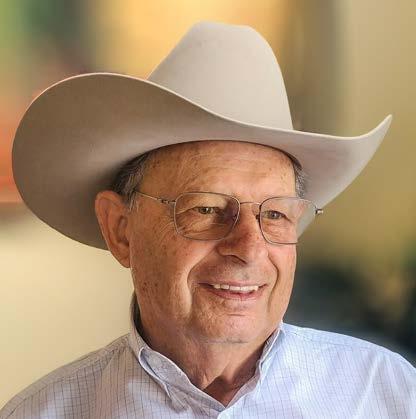
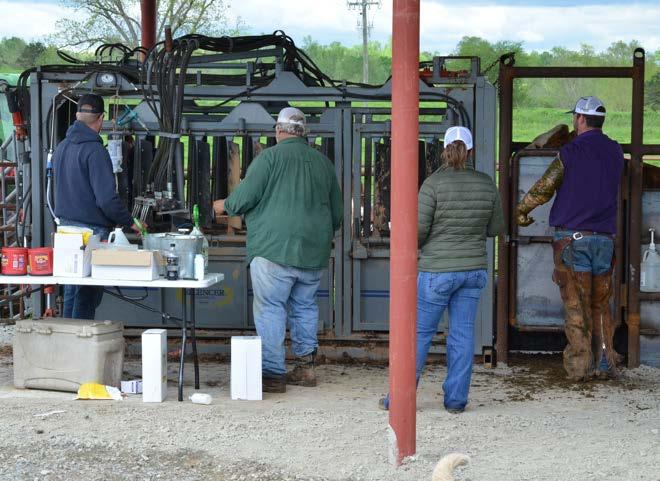
animal husbandry, it takes a team working towards a common goal, WHEN WE CAN TELL OUR just so much upside to Brangus and we’re excited to be a part of it. We to be able to do what we do at this CUSTOMERS THAT OUT OF had our first CDP Brangus sale in level. It starts at the top - John has been enthusiastically committed 40 REPLACEMENT SISTERS, November, and we were humbled with the over-whelming support to aggressively improving our cow herd. That passion is what fuels our WE STILL HAVE 38 IN OUR from breeders across the country and internationally.” team. We are proud to have joined with like-minded breeders to form HERD FIVE YEARS LATER, THEY “It’s a family affair. And that’s why we do it,” reminds Green. “My wife Cavender-Draggin’ M and Partners APPRECIATE THE PROVEN Sara and our two kids, Hadley, 6, this past year.” “We’re excited for the breed, COW FAMILIES OF THE BULLS. and Breck, 3, are a big part of the operation. They’re always out riding and the future of Brangus. We have horses and helping out around the a passion for building the breed ranch. It’s our goal in life to raise our through our cow herd and we continue to see the upward trend kids around agriculture. We’re hoping we can build the next of registration numbers and quality across all breeders. There’s generation of Brangus around here, in more ways than one.”
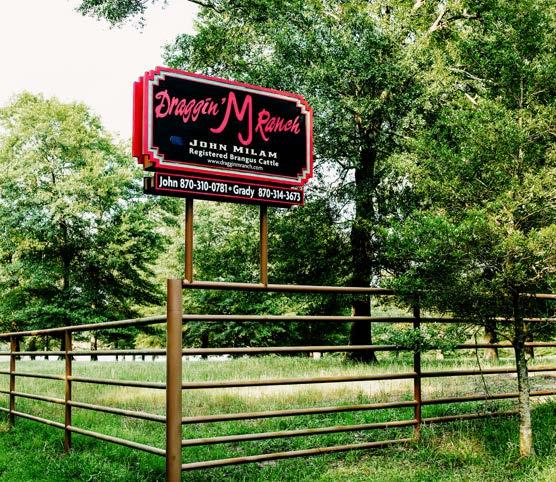
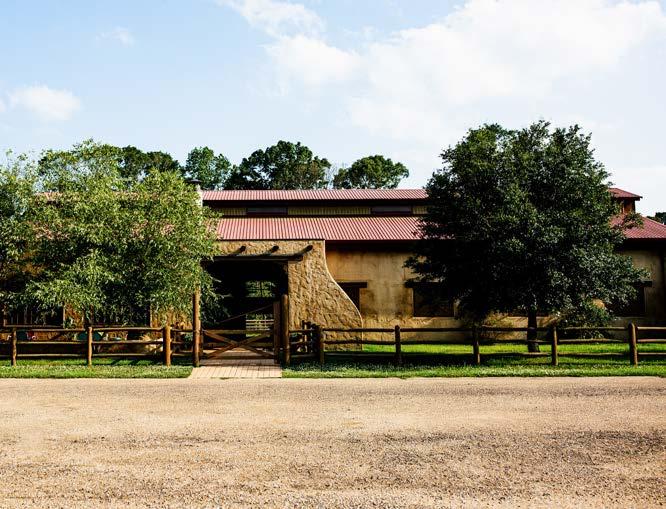
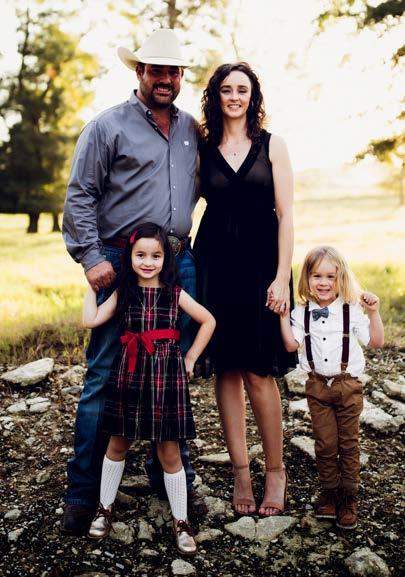

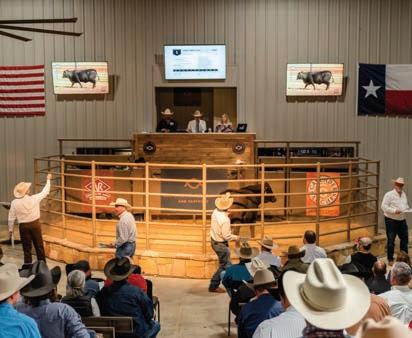
Thank You!
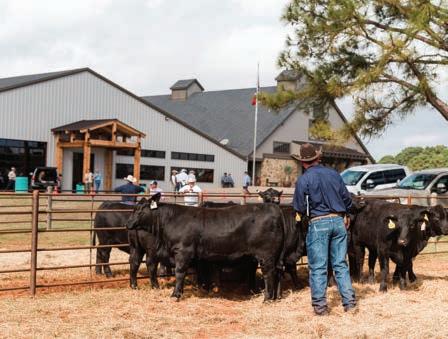
Cavender-Draggin’ M and Partners experienced record turnout for the 16th Annual Fall Production Sale at Cavender’s Neches River Ranch. Sale goers were treated to first class hospitality, hosted by Joe and Nancy Cavender, at the newly expanded and renovated Neches River sale and event facility. The inaugural fall registered female event and this year’s expanded bull offering were met with great enthusiasm by all in attendance. On top of the expanded offering, there was excitement towards the new pens that were built to better merchandise the larger offering of bulls at CDP. When the dust settled, premium Brangus and Ultrablack genetics, that are sure to help drive success for many operations, were spread across 15 states, coast-to-coast.
CDP would like to thank all our friends and customers who came out to support and make this sale a great success.
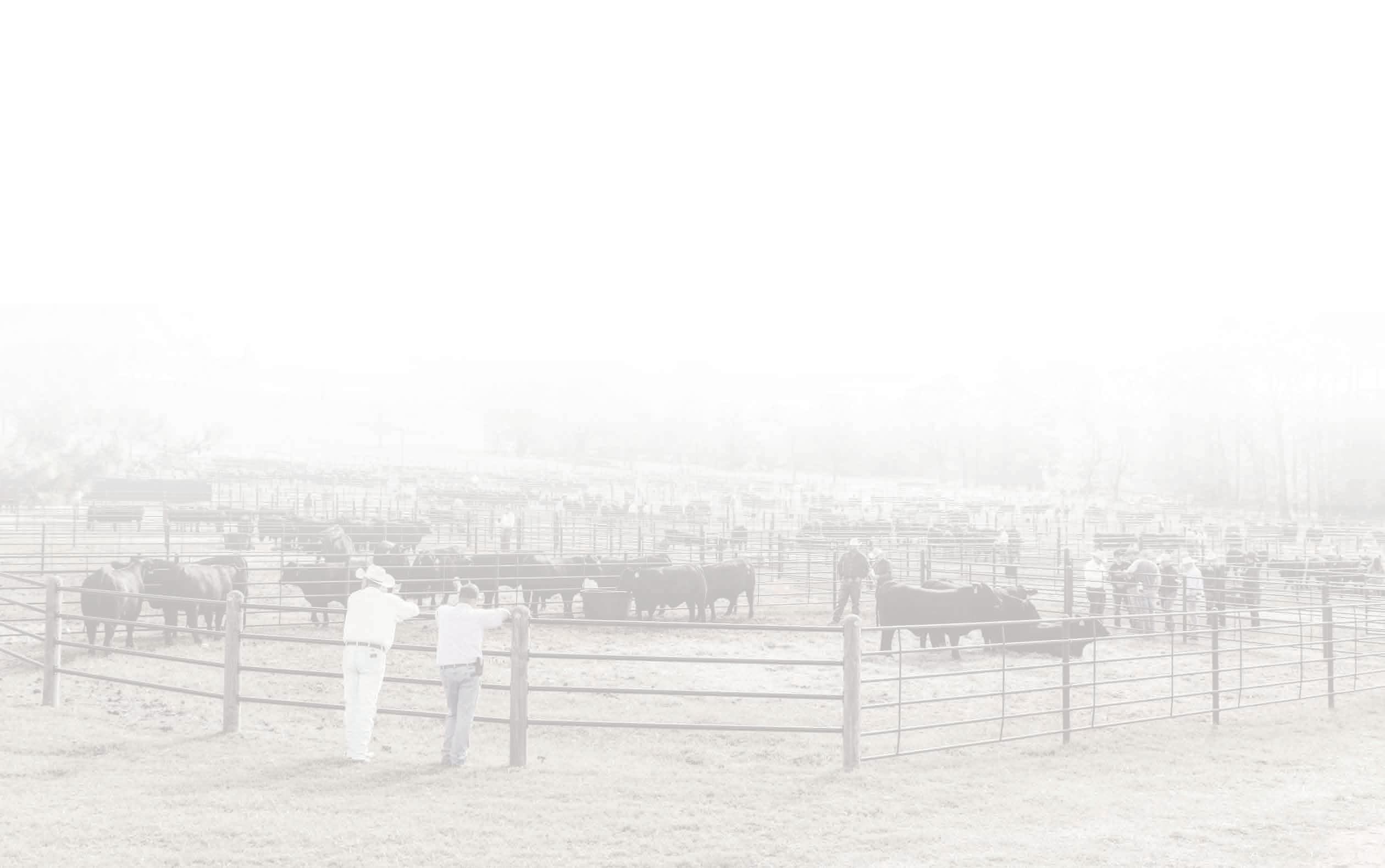
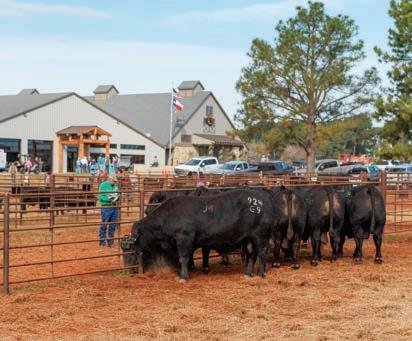
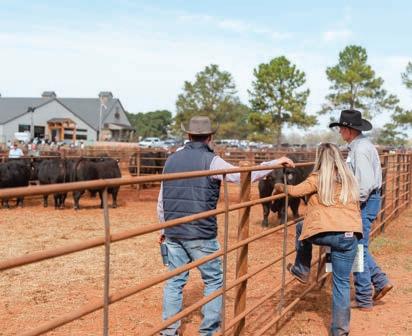
DMR EMPIRE 415G35 DMR EMPIRE 535G45 DMR EMPIRE 30G36
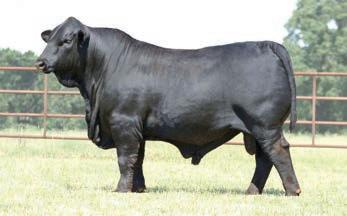
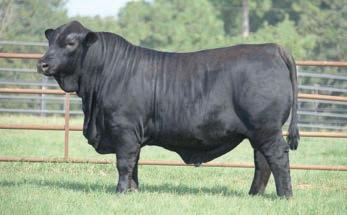
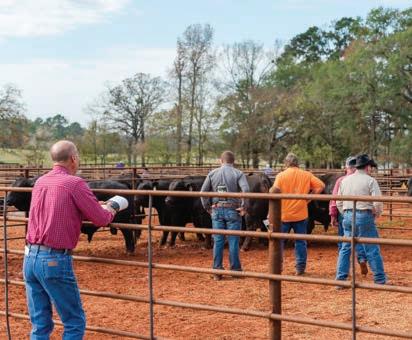

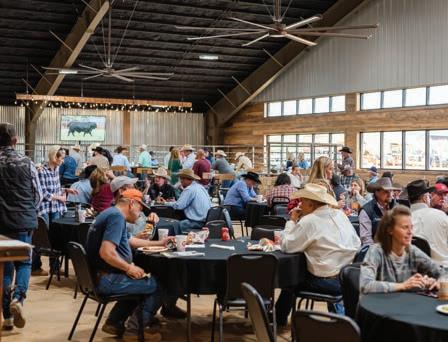
Sold by Draggin' M Ranch to Gold Creek Brangus - Marietta, GA Las Palomas Ranch - Marietta, GA $56,000
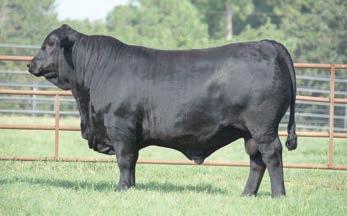
DMR CAPITALIST 795G26

Sold by Draggin' M Ranch to Salacoa Valley Farms - Fairmount, GA $48,000
WAT EMPIRE 302G44
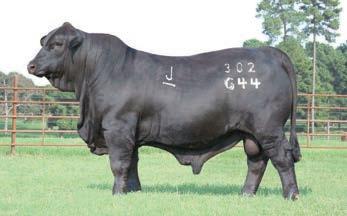
Sold by Draggin' M Ranch to JRT Brangus - Cumming, GA $45,000
CB CAPITAL GAIN 2051G11

Sold by Draggin' M Ranch to Quail Valley Farms - Oneonta, AL $20,000
Sold by Johnston Brangus to Hayman's 711 Ranch - Kenansville, FL $20,000
Sold by Cavender Brangus to Draggin' M Ranch - El Dorado, AR $16,000
NECHES RIVER SALE AVERAGES
BRANGUS & ULTRABLACK BULLS $6,356
BRANGUS & ULTRABLACK FEMALES $8,328
COMMERCIAL FEMALES $1,940
Vitamin A NEEDS DURING DROUGHT TIMES

by Vince Collison, DVM, Collison Embryo Center
This year has been extremely unusual for western Iowa. content than an average year. Vitamin A deficiency can cause After several years of excessive spring rains and mud, causing many issues, but at calving, it is most commonly seen as calves many newborn calf issues, we’ve had a real turn around and not wanting to get up and nurse at birth. The other problem experienced a full-blown drought with in you may notice is stillborn calves. We much of west central Iowa. This can lead to problems that potentially won’t show PROBABLY ONE OF THE have noticed more of these issues in the last ten years as producers have moved up until the spring calving season. We’ve already seen with the BIGGEST CONCERNS to feeding more modified wet distillers, ground corn stalks, and silage as a ultrasound pregnancy exams a lot of open WE HAVE GOING INTO winter ration instead of hay. This type of and later bred cows. It seems to have hit the cows that were bred in June and early CALVING NEXT SPRING IS ration is basically devoid of vitamin A. Producers that typically feed a lot of hay July the hardest. Many of these cattle will usually cool off in pasture creeks. With THERE WILL BE A HIGHER in their ration don’t see these low vitamin A issues as often unless they are using hay the extreme lack of rain, many of these pasture creeks are not flowing, and a CHANCE TO SEE VITAMIN A that was put up in drought conditions or even rained on before putting up. typically reliable source of cool water to DEFICIENCY FOLLOWING A Cows will store vitamin A in their stand in is not available. Probably one of the biggest concerns DROUGHT YEAR liver for 3-4 months, so in a typical year, the reserves they store can usually last we have going into calving next spring them through the fall into December. is there will be a higher chance to see One of the other problems with vitamin vitamin A deficiency following a drought year. Forage put up A is that it undergoes degradation very quickly when in under drought conditions will usually have lower vitamin A contact with mineral or distillers. We have seen cattle fed
distiller, cornstalk, and silage rations, with a mineral fortified with vitamin A to meet cows’ needs and still show symptoms of low vitamin A. Our observations have been that vitamin A packaged in mineral products will lose potency the longer it sits post-manufacturing.
You will generally notice the symptoms of low vitamin A in calves first. Usually, the cows will not show any symptoms. Another problem with low vitamin A in calves is impaired immune functions. For cows, symptoms may appear as a lack of regular estrus cycles and fertility. Vitamin A is required for healthy embryo development and cell differentiation during the development process. If you have seen any of these issues in the past, vitamin A deficiency should be considered as a cause.
There are various ways to supplement cattle for vitamin A: 1) Injecting vitamin A is an easy solution. It can be done in early winter at the time of pregnancy exams and is an excellent time to booster liver stores prior to calving. Injectable vitamin A can commonly cause reactions in cows, so always have epinephrine on hand and watch cows closely after injecting. Avoid giving any other injections on the same side of the neck when injecting vitamin A. Consult your herd veterinarian if using injectable vitamin A. 2) Feed a vitamin A premix in the TMR at a rate to meet the cow’s daily needs. It can work quite well, but overfeeding can result in toxicity, so feeding just the amount needed is vital. 3) Adding quality hay to the ration will meet a cow’s needs just as well as anything supplemented or injected.
Vitamin A deficiency is a complex issue. It can show up in many various feeding situations. Serum from cattle can be analyzed for vitamin A and how we like to diagnose a problem. If cows have been on good pasture during the summer, we would wait until December or January to sample cows for vitamin A status. If cows are in dry lot situations during the summer, surveillance can be done at any time. We feel it is best to check cows before supplementing them with vitamin A, as levels too high can result in toxicity issues. Toxicity will show up as hyperkeratosis, alopecia, and loss of condition in cows. When FEATURE ARTICLE supplementing vitamin A in the herd, it is best to work or consult with your herd veterinarian or nutritionist. Many herds typically won’t experience problems, but with feed put up in widespread drought conditions this summer, it is something producers need to be aware of heading into the next calving season.
Dr. Vince Collison is co-owner of Collison Embryo and Collison Veterinary Services in Rockwell City, Iowa. This article was originally published in and reprinted with permission from The Stockman Magazine and Collison Embryo Center.

The InTernaTIonal JunIor Brangus Breeders assocIaTIon Presents SCHEDULE OF EVENTS July 27 - August 1, 2021 Bell counTY eXPo Belton, texAs
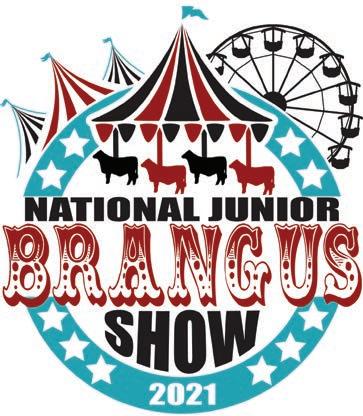
Over $50,000 Awarded Friday July 30 Buckles Banners Scholarships Premiums Awards 8:00 am Bred and owned shows
Tuesday July 27 owned ultra Female show Percentage Female show 8:00 am Cattle and tack Allowed in Barns 12:00 noon lunch 12:00 pm IJBBA Board Candidate Interviews Futurity only Cattle Check-In 3:00 pm Cattle Must Be In Place 1:30 pm skill-A-thon & Judging Contests 4:00 pm opening Ceremonies 4:30 pm Costume Contest 6:00 pm nJBs Fun night 5:00 pm source of Champions sale & social

Wednesday July 28 7:30 am Breakfast with the Brangus Queen 8:00 am nJBs Cattle Check-In 12:00 noon lunch 1:00 pm stock show u Demo Clinic 2:00 pm team Fitting & showing Contest 6:00 pm Dinner & Brangus Jeopardy
Saturday July 31 8:00 am national Junior owned shows 12:00 noon lunch 3:00 pm IJBBA legacy Foundation supreme Heifer scholarship showdown 6:00 pm IJBBA general Membership Meeting & Awards Banquet
Thursday July 29 Sunday August 1 8:00 am sullivan supply showmanship Contests 8:00 am Brangus Futurity show 12:00 noon lunch Animals must be out of barn by midnight. More InforMatIon CoMIng Soon! www.juniorbrangus.com 1:30 pm Roger & Janet greuel speech Contest 4:00 pm salesmanship Contest 6:30 pm taste of states 7:30 pm Barnyard olympics GreAtestsHOWthe onearth *this schedule is tentative and therefore, subject to change.
